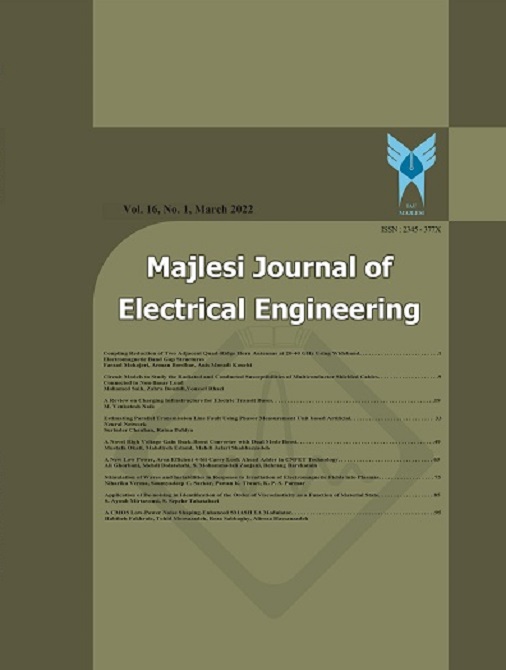[1] M.C. Nataraja, M.A. Jayaram, and C.N. Ravikumar, “Prediction of Early Strength of Concrete: A Fuzzy Inference System Model,” International Journal of Physical Sciences, Vol. 1, pp. 47-56, 2006.
[2] W. Pedrycz, “An identification algorithm in fuzzy relational system,” Fuzzy Sets Syst., Vol. 13, pp. 153-167, 1984.
[3] R. M. Tong, “The evaluation of fuzzy models derived from experimental data,” Fuzzy Sets Syst., Vol. 13, pp. 1-12, 1980.
[4] C. W. Xu. and Y. Zailu, “Fuzzy model identification self-learning for dynamic system,” IEEE Trans. on System, Man, and Cybernetics, Vol. 17(4), pp. 683-689, 1987.
[5] M. Sugeno and T. Yasukawa, “Linguistic modeling based on numerical data,” in IFSA’91 Brussels, Computer, Management & System Science, pp. 264-267. 1991.
[6] S. K. Oh. and W. Pedrycz, “Identification of Fuzzy Systems by means of an Auto-Tuning Algorithm and Its Application to Nonlinear Systems,” Fuzzy Sets and Syst., Vol. 115(2), pp. 205-230, 2000.
[7] F. Liu, P. Lu, and R. Pei, “A new fuzzy modeling and identification based on fast-cluster and genetic algorithm,” Intell. Contr. Automat., Vol. 1, pp. 290-293, 2004.
[8] W.Y Chung, W. Pedrycz, and E.T. Kim, “A new two-phase approach to fuzzy modeling for nonlinear function approximation,” IEICE Trans. Info. Syst., Vol. 9, pp. 2473-2483, 2006
[9] Z.-L. Gaing, “A particle swarm optimization approach for optimum design of PID controller in AVR system, ” IEEE Trans. Energy Conversion, Vol. 19, pp. 384-391, 2004.
[10] K.E. Parsopoulos and M.N. Vrahatis, “On the computation of all global minimizers through particle swarm optimization,” IEEE Trans. Evolutionary Computation, Vol. 8, pp. 211-224, 2004.
[11] M.A. Abido, “Optimal design of power-system stabilizers using particle swarm optimization, ” IEEE Trans. Energy Conversion, Vol. 17, pp. 406-413, 2002.
[12] C.-L. Huang and C.-J. Wang, “A GA-based feature selection and parameters optimization for support vector machines, ” Expert Systems with Applications, Vol. 31, pp. 231-240, 2006.
[13] B. J. Park., W. Pedrycz., and S. K. Oh, “Identification of Fuzzy Models with the Aid of Evolutionary Data Granulation”. IEE Proc.-Control Theory and Applications, Vol. 148, pp. 406-418, 2001
[14] S. Horikawa, T. Furuhashi and Y. Uchigawa, “On fuzzy modeling using fuzzy neural networks with the back propagation algorithm,” IEEE Trans. Neural Networks, Vol. 3, pp. 801-806, 1992.
[15] G. Kang and M. Sugeno, “Fuzzy modeling,” Trans. SICE, Vol. 23, pp. 106-108, 1987.
[16] T. Kondo, “Revised GMDH algorithm estimating degree of the complete polynomial,” Trans. Soc. Instrum. Control Eng., Vol. 22(9), pp. 928-934, 1986.
[17] S.K. Oh, W. Pedrycz, and H.S. Park, “Rule-based multi-FNN identification with the aid of evolutionary fuzzy granulation,” Knowledge-Based systems, Vol. 17, pp. 1-13, 2004.
[18] Krishnaiah, and P.R. Kanal, editors: Classification, Pattern Recognition, and Reduction of Dimensionality. Handbook of Statistics, Vol. 2, North-Holland, Amsterdam, 1982.
[19] L.X. Wang and M. Mendel: “Generating fuzzy rules from numerical data with applications,” IEEE Trans. on System, Man, and Cybernetics, Vol. 22, pp. 1414-1427 (1992)
[20] J.S.R. Jang, “ANFIS: adaptive-network-based fuzzy inference system,” IEEE Trans. System Man Cybernet., Vol. 23(3), pp. 665-685, 1993.
[21] L.P. Maguire, B. Roche, T.M. McGinnity, and L.J. McDaid, “Predicting a chaotic time series using a fuzzy neural, network,” Inform. Sci., Vol. 112, pp. 125-136, 1998.
[22] J.C. Duan and F.L. Chung, “Multilevel fuzzy relational systems: structure and identification,” Soft Computing, Vol. 6, pp. 71-86, 2002.
[23] Y.Chen, B. Yang, and A. Abraham, “Automatic design of hierarchical Takagi-Sugeno type fuzzy systems using evolutionary algorithms,” IEEE Trans. Fuzzy Systems, Vol. 15, pp. 385-397, 2007.

